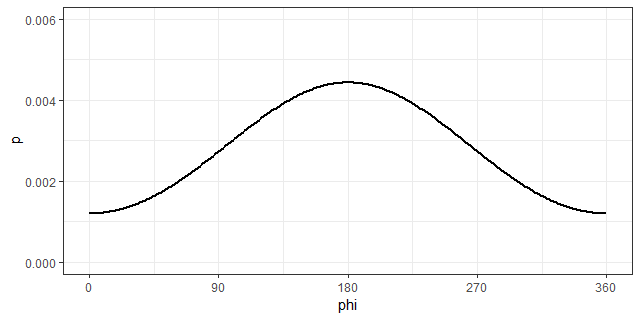If you have a prior for the angle, I'd use it as the reference. E.g. I'd rotate all data so that the prior is at $180^{\circ}$ and measure all angles on the scale $[0^{\circ}, 360^{\circ})$.
I see no elegant solution to measuring distance between two angles, $\phi$ and $\psi$. I'd calculate the differences $(\phi - \psi)$ and $(((\phi + 180^{\circ}) \mod 360^{\circ}) - ((\psi + 180^{\circ}) \mod 360^{\circ}) )$ and take the one with the smaller absolute value.
Regarding the distribution to use, if the variance is sufficiently small, I see no reason not to use Gaussian. If the small probabilities at the tails disturb you, you can try beta distribution (properly scaled, so that it covers your angle range), with $\alpha = \beta \ge 1$. For $\alpha = \beta = 1$ you'd get the uniform distribution. However, if your variance is large, so that the the process which generates the angles can generate values $> 360^{\circ}$ and $< 0^{\circ}$ with a non-negligible probability, then you are in trouble. You can wrap the Gaussian distribution so that its support is $[0, 360)^{\circ}$, but its PDF is not too handy (having an infinite sum of $\cosh$'s as a term, if I did my algebra correctly). The curve resembles a raised Gaussian:

but mathematically it is different.

